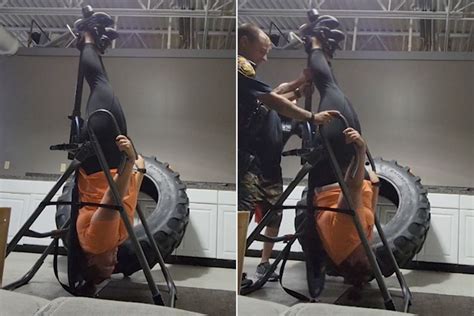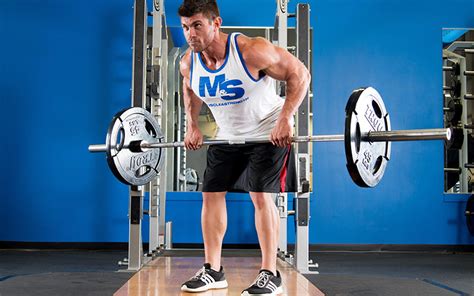Stuck on a strength plateau? What advanced methods unlock your next peak performance level?

The Frustration of the Strength Plateau
Every dedicated lifter eventually faces it: the dreaded strength plateau. You’ve been consistent, pushing hard, but suddenly, the weights aren’t moving up, reps aren’t increasing, and progress grinds to a halt. It’s demotivating, frustrating, and can make you question your entire training strategy. But fear not, this isn’t the end of your gains; it’s an invitation to evolve your approach. Your body has adapted to your current stimulus, and to break through, you need to introduce new challenges.

Why Plateaus Happen: The Science of Adaptation
To overcome a plateau, it’s crucial to understand its root causes. Our bodies are incredibly efficient at adapting to stress. When you consistently perform the same exercises with the same intensity and volume, your muscles, nervous system, and connective tissues become accustomed to that workload. This leads to diminishing returns. Common culprits include:
- Insufficient Progressive Overload: Not consistently increasing the demand on your muscles.
- Inadequate Recovery: Overtraining, poor sleep, and chronic stress hinder muscle repair and growth.
- Nutritional Deficiencies: Not consuming enough calories, protein, or micronutrients to support performance and recovery.
- Lack of Variation: Doing the same routine for too long.
- Technique Breakdown: Poor form limiting your ability to lift heavier safely.
Advanced Training Techniques to Break Through
Once you’ve ensured your foundational nutrition, recovery, and basic progressive overload are dialed in, it’s time to explore advanced strategies that can shock your system into new growth.
1. Periodization: Strategic Planning for Long-Term Gains
Periodization involves systematically varying your training variables (volume, intensity, exercise selection) over planned cycles. Instead of randomly hitting the gym, you’re working towards specific goals within structured phases.
- Linear Periodization: Gradually increasing intensity while decreasing volume over weeks or months, culminating in a peak.
- Undulating Periodization (Daily/Weekly): Varies intensity and volume more frequently (e.g., heavy day, moderate day, light day within a week). This keeps the body guessing and can be effective for managing fatigue and promoting consistent adaptation.
2. Intensity Techniques: Pushing Beyond Failure
These methods are designed to take your muscles past their normal point of fatigue, recruiting more muscle fibers and stimulating new growth. Use them sparingly, typically on your last set of an exercise, to avoid overtraining.
- Drop Sets: Perform a set to failure, then immediately reduce the weight by 15-25% and continue for more reps until failure. Repeat 1-2 times.
- Rest-Pause Sets: Perform a set to failure, rest for a brief period (10-20 seconds), then perform a few more reps with the same weight. Repeat for 2-3 mini-sets.
- Cluster Sets: Break a set into smaller mini-sets with short, planned rests (10-30 seconds) in between. This allows you to lift heavier weights for more total reps than a traditional straight set.
- Negatives (Eccentric Training): Focus solely on the lowering (eccentric) phase of an exercise, often with a heavier weight than you can lift concentrically. Have a spotter help with the lifting phase.
- Forced Reps: With the help of a spotter, continue lifting beyond muscular failure by having them provide just enough assistance to complete 1-3 additional repetitions.

3. Autoregulation: Training Based on Daily Readiness
Instead of rigidly following a pre-set program, autoregulation involves adjusting your training based on how you feel on any given day. This is often done using:
- Rate of Perceived Exertion (RPE): A scale of 1-10, where 10 is maximum effort. If your program calls for an RPE 8, you’d choose a weight that allows you to leave 2 reps in the tank.
- Reps in Reserve (RIR): Similar to RPE, this specifies how many reps you should have left before failure.
This method prevents overtraining on low-energy days and allows you to push harder on high-energy days, optimizing recovery and performance.
4. Varying Your Stimulus: Exercise Selection and Training Modalities
Sometimes, simply swapping out exercises or changing your training style can be enough to spur new growth.
- Exercise Variation: Switch from barbell back squats to front squats or leg press. Swap bench press for dumbbell press or dips. These subtle changes alter the biomechanics and muscle activation patterns.
- Unilateral Training: Incorporate more single-limb exercises (e.g., lunges, single-arm rows, pistol squats). This can address muscle imbalances and improve core stability.
- Specialized Blocks: Dedicate periods to focusing on specific lifts or muscle groups that are lagging.
The Critical Role of Recovery and Nutrition
No amount of advanced training will work if your recovery and nutrition aren’t optimized.
- Deload Weeks: Periodically reduce your training volume and intensity (e.g., every 4-8 weeks) for a week. This allows your body and central nervous system to fully recover, often leading to significant strength jumps afterward.
- Sleep: Prioritize 7-9 hours of quality sleep per night. This is when your body repairs and rebuilds.
- Hydration: Stay well-hydrated throughout the day.
- Nutrition for Growth: Ensure you are in a slight calorie surplus (if your goal is muscle gain) and consume adequate protein (1.6-2.2g per kg bodyweight) to support muscle protein synthesis. Don’t neglect healthy fats and complex carbohydrates.

Mindset and Technique Refinement
Beyond the physical, your mental approach and precision in execution play a huge role.
- Mind-Muscle Connection: Actively focus on feeling the target muscle work during each rep. This enhances activation and can lead to better hypertrophy.
- Form Over Ego: Continuously review and refine your technique. Sometimes, a slight adjustment to your setup or movement pattern can unlock new strength and prevent injury.
- Set New Goals: Once you break through one plateau, immediately set your sights on the next milestone.

Charting Your Path to New Heights
Breaking a strength plateau requires a multi-faceted approach. It’s not just about lifting heavier; it’s about training smarter, recovering better, and nourishing your body comprehensively. Experiment with different advanced methods, listen to your body, and track your progress diligently. With strategic planning, dedicated effort, and a willingness to adapt, you’ll not only smash through your current plateau but also unlock a new level of peak performance you never thought possible. The journey to continuous improvement is challenging, but immensely rewarding.








